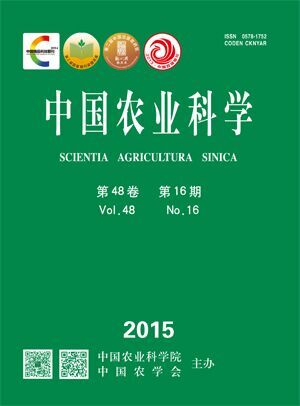-
Determination of the Activities of Bactrian Camel CYP3A Enzyme by Specific Probe Drug
- PEI Le, ZHANG Wen-bin, Hasisurong
-
Scientia Agricultura Sinica. 2015, 48(16):
3266-3274.
doi:10.3864/j.issn.0578-1752.2015.16.016
-
 Abstract
(
585 )
Abstract
(
585 )
 HTML
(
1 )
HTML
(
1 )
 PDF (478KB)
(
381
)
PDF (478KB)
(
381
)
 Save
Save
-
References |
Related Articles |
Metrics
【Objective】The objective of this paper is to study the activities of Bactrian camel hepatic CYP3A enzyme in vitro and its influences on exogenous drug metabolism. 【Method】 The Bactrian camels were sacrificed by bloodletting in jugular veins after fasting for overnight about 12 hours, and liver tissues were collected immediately from the area of hepatic portal vein, washed away the blood by cold normal saline, and preserved in liquid nitrogen and sent to the lab. The Bactrian camel hepatic microsome was prepared by Ca2+ precipitation method following weighing and homogenate, and then BCA method was used in this experiment for detecting the protein contents of hepatic microsomes. As well as Bactrian camel hepatic microsomal incubation system was optimized, different concentrations of Bactrian camel hepatic microsomal protein suspensions (0.016, 0.031, 0.063, 0.125, 0.250, 0.500, 1.00, 2.000 mg?mL-1), different concentrations of midazolam (MDZ) as probe drug (7.813, 15.625, 31.250, 62.500, 125, 250, 500, 1 000 µg?mL-1) were, respectively, added to the incubation system, after 5 min for preincubation at 37℃, added the solution of reduced form of nicotinamide-adenine dinucleotide phosphate (NADPH) and incubated again for different times (0, 2, 5, 10, 15, 20, 25, 30 min). The cold methanol and diazepam (DZP) solution were added to the system for terminating the reaction, and vortex mixing, 800 µL mixed liquids were centrifugated at 14 500 r/min for 20 min, 20 µL supernatant was detected by the high performance liquid chromatography with UV method (HPLC-UV) to determine the optimum concentration of substrate, the optimum concentration of enzyme, and the optimal incubation time. Different concentrations of 20 µL MDZ solution (7.813, 15.625, 31.250, 62.500, 125, 250, 500, 1 000 µg?mL-1) as probe drug were incubated with Bactrian camel hepatic microsomes for 15 min, respectively, and then the reaction was terminated by ice-cold methanol mixed with the internal standard of diazepam. The dynamic contents of reaction metabolite 1′-Hydroxymidazolam (1′-OHMDZ) were detected by the HPLC-UV method, and some pharmacokinetic parameters were calculated. Chromatographic conditions were Sigma-Aldrich/Supelco Discovery C18 chromatographic column (150 mm×4.6 mm, 5 µm), mobile phase of V (acetonitrile) was V (0.01 mol?L-1 PBS) = 40:60, the elution lasted for 20 min with the same concentration, the detection wavelength was 254 nm, a flow rate was 0.8 mL?min-1, column temperature was 30℃, and the injection volume was 20 μL. 【Result】 Bactrian camel hepatic microsomes, which were prepared by the Ca2+ precipitation method, maintained a good activity to meet the basic requirements of the following-up drug metabolism tests in vitro, and the protein content of hepatic microsomes was (1.936±0.052) mg?mL-1. The Bactrian camel hepatic microsomal incubation system was constituted by bactrian camel hepatic microsomal protein suspensions, midazolam as probe drug, PBS buffer, MgCl2 solution and NADPH solution. With the extension of the incubation time, the enzyme and substrates were further reacted, when the concentration of MDZ was 125 μg?mL-1 (final concentration was 7.073 nmol?mL-1), and the concentration of hepatic microsomes was 2.000 mg?mL-1 (final concentration was 0.050 mg?mL-1), and the incubation time was 15 min, the enzyme and substrate most closely reacted to the saturated state, and the final concentration and the incubation time were determined to the optimum ones. The retention times of 1′-OHMDZ, MDZ and DZP were 6.710 min, 11.383 min, and 15.263 min, respectively, by detection of HPLC-UV method, and the chromatographic peak of each component was completely separated, which was not influenced by the other interfering peaks in the Bactrian camel hepatic microsomal incubation system. The precision, stability and recovery test results of HPLC detection method were consistent with the basic requirements of chromatography, and an accurate, sensitive, reliable, and reproducible detection method was successfully established for Bactrian CYP3A enzyme specific probe drugs. The concentration of substrate MDZ and the generation rate of metabolite 1′- OHMDZ were used to draw a double-reciprocal plot (Lineweaver-Burk plot), and maximum reaction rate Vmax and Michaelis constant Km were calculated by Origin Pro8.6 software for the analysis of linear regression. The Vmax and Km were (0.380±0.028) nmol?mg-1?min-1 and (9.603±3.229) nmol?mL-1, respectively, which showed the reaction of enzyme and substrates, and determined the activities of Bactrian camel CYP3A enzyme indirectly. 【Conclusion】The HPLC-UV method for detecting the concentration of midazolam, which is the specific probe drug of CYP3A enzyme, and its metabolites were established successfully. The essential metabolite of MDZ oxidized by specific CYP3A enzymes in the body was 1′- OHMDZ. The metabolic activities of Bactrian camel CYP3A enzyme in vitro, and the characteristics of enzyme-substrate interaction were preliminarily studied for the first time using the generation rate of essential metabolite as a detection indicator.









